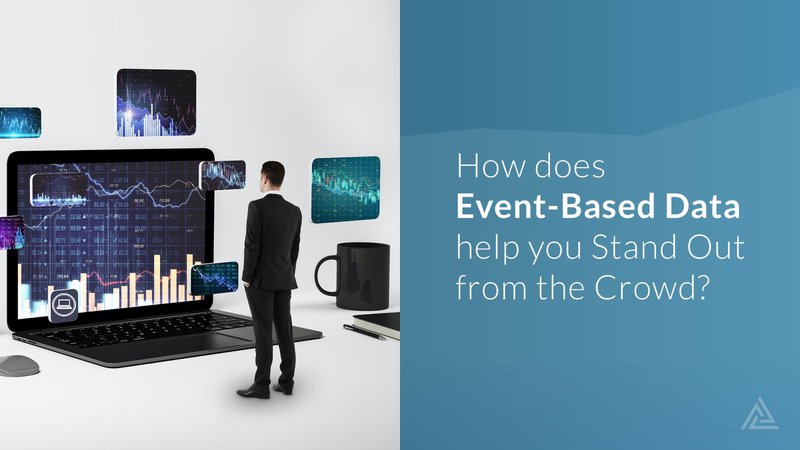
Phrases like data management, product analytics, data transparency, and data-driven insights are thrown around a lot when it comes to event-based data use in applications. But, what does it all really mean? We’re breaking things down to help you learn how to stand out from the crowd and highlight the value of your product.
What does the phrase “Event-Based Data” represent?
Before we dive into what event-based data is, we must first understand what an event is. Perhaps Tech Target said it best when they said, “An event, in a computing context, is an action or occurrence that can be identified by a program and has significance for system hardware or software. Events can be user-generated, such as keystrokes and mouse clicks, or system-generated, such as program loading, running out of memory and errors.”
In applications, events can be user-generated actions like newsletter sign-ups, product purchases, click-throughs to weblinks, etc… Every event that occurs within a program generates data that when brought together can paint a detailed picture of how users are interacting and engaging with software and applications. To that end, event data management is the process of tracking all of that data, analyzing it, and turning it into visually actionable dashboards or reports that you and your end-users can utilize to make decisions in their businesses.

Why is event data management important to your bottom line?
When you can provide your end-user with product analytics and data-driven insights, they are able to predict outcomes for things like revenue and company growth. Imagine being able to collect data and report on various elements of a business such as sales, marketing, financing, customer service and more.
For example, a publishing company wants to know how many subscribers they can anticipate for the next quarter. This information can tell the company how many writers they can afford to pay, how many customer service representatives they might need, and even how much bandwidth they need for their website to stay online.
Using data from the previous year’s subscriptions, the publishing company can anticipate the number of subscribers for this year. If their numbers are down, they can even look at other data that has been collected and analyzed to pinpoint why there is a discrepancy, and perhaps tweak their marketing campaigns to get their numbers back on track.
Suppose the data analysis indicated most subscriptions resulted from a Facebook ad campaign. If the company isn’t using Facebook ads for this quarter, that could explain the dip in subscriptions. And, if they analyze the data and find that Twitter or LinkedIn are the better places to promote, they could pull back on their marketing with other social media platforms and focus their efforts on the ones that are working.
That’s the power of data. Effective data transparency and event data management is what can differentiate your product from others on the market.
Can an application increase revenue with a better process for effective event data management?
Yes, and if you aren’t providing your end-users with the product analytics they are looking for, you could lose them to a competitor. Here’s the thing – people are becoming more acutely aware of how important data is. They are already looking for ways to analyze it and use it to help improve their own bottom line too. This is your big opportunity to arm them with a powerful tool to do just that.

How can you get started? In our opinion, the best first step is to go to your customers and ask them exactly what kind of event data they want to gather and analyze. Then, create event data management tools for them within your current applications so that your customers can start using them right away. While that may feel like a daunting task, it doesn’t have to be. In fact, that’s where Keen comes in.
We’ve helped countless application and software developers seamlessly integrate Keen’s event data management platform efficiently into their products and for far less money than they would have spent trying to do it all on their own. Our team makes it easy to find those valuable data-driven insights faster, and pass them along to your end-users. Click here to learn more about how we can help you take your applications and software to the next level.



